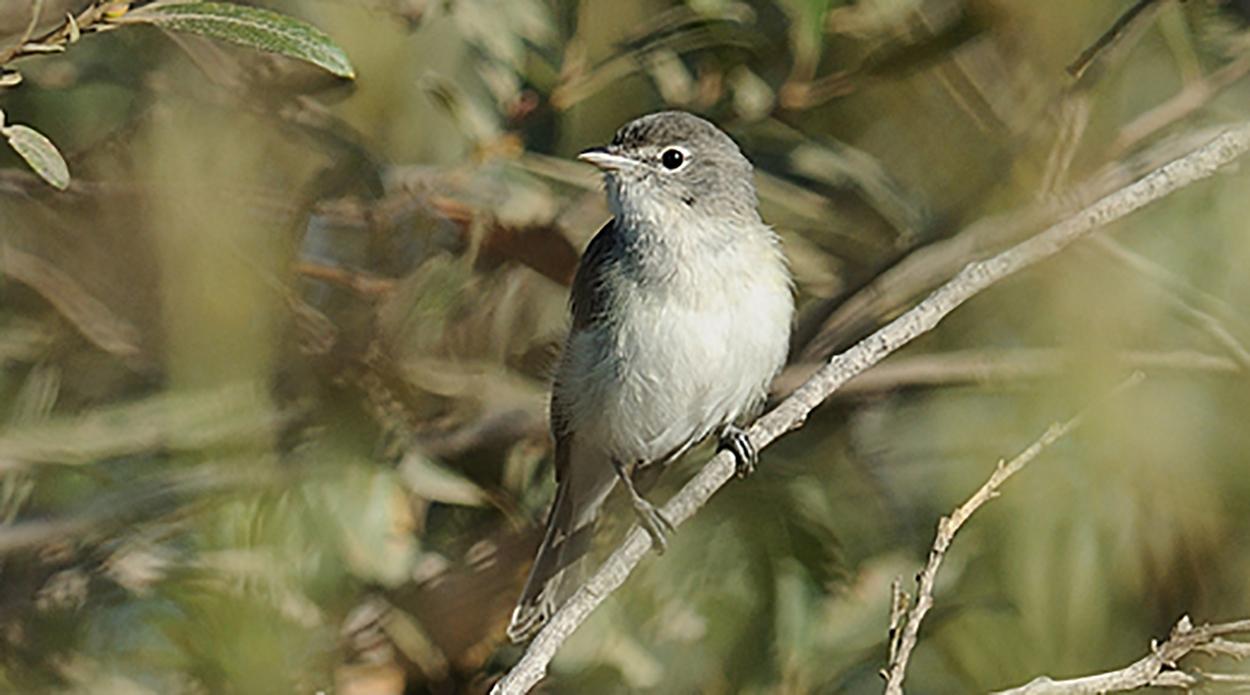
Covered Species Spotlight: Least Bell’s Vireo (Vireo bellii pusillus)
The federally- and state-listed endangered least Bell’s vireo (Vireo bellii pusillus; LBVI) is a small songbird (4 - 5 inches in size) with white eye rings, short, rounded wings, straight bills, and feathers that are dull olive-gray with paler shades of gray running to white along their bellies. LBVI are insectivorous and prey on a wide variety of insects including flies, ants, beetles, grasshoppers, moths, butterflies, and caterpillars. They forage mostly by plucking (gleaning) insects from leaves, twigs, and branches throughout the dense, lower level of the canopy, but will also feed on insects while in flight or hovering midair (hawking or flycatching).
As a neotropical migrant, LBVI fly nearly 2,000 miles every spring from southern Mexico up to southern California to breed before migrating back south in July. In southern California, LBVI typically breed in low elevation (>2,000 feet above mean sea level), willow-dominated riparian habitats that occur near or along watercourses and feature a dense shrub understory and multi-layered canopy. Vegetation communities commonly occupied by the species include southern willow scrub, cottonwood forest, mule fat scrub, sycamore alluvial woodland, coast live oak riparian forest, and arroyo willow riparian forest.
LBVI arrive on their southern California breeding grounds in mid-March to early April, with males arriving several days before females. Once paired, the male and female will select a nest site together and construct a cup-shaped nest using grass, plant stems and fiber, small leaves, wool, moss, bark, and spider silk, usually in a small fork in the branch of a tree or shrub. Once the nest is complete, three to four eggs are laid and are then incubated for approximately 14 days before they hatch. Once hatched, nestlings are fed by both parents and will begin to fly and leave the nest 10 to 12 days later. At the end of the breeding season (mid-July to late September), they will depart their southern California territories and migrate south to southern Mexico for winter.
Since 2014, The Nature Reserve has conducted avian point-count surveys every 3 years to monitor the status and distribution of LBVI in riparian/wetland vegetation communities along San Juan Creek, Chiquita Creek, and other major creeks and tributaries on the reserve. Surveys in 2023 resulted in the highest number of LBVI recorded to date and confirmed that the overall occupancy and distribution of the species is relatively stable within The Nature Reserve.
